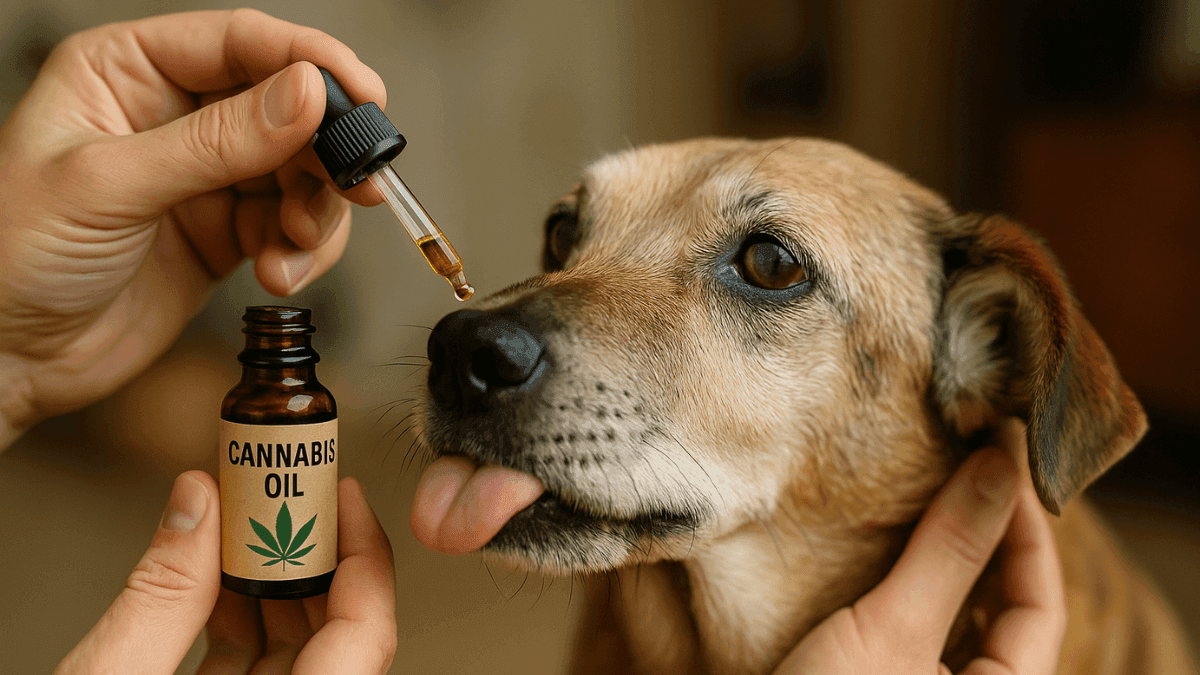Cannabis medicinal traz conforto e esperança a pets com tumores: “é sobre viver melhor até o fim”
Veterinária aposta na cannabis medicinal para aliviar dor, devolver apetite e qualidade de vida a pets com tumores
Publicada em 07/10/2025

Como a cannabis medicinal tem transformado o cuidado paliativo em animais com câncer | CanvaPro
Quando a cura já não é mais possível, cada gesto de alívio passa a valer ouro. O olhar que volta a brilhar, o rabo que abana outra vez, o apetite que renasce são pequenos sinais que enchem de sentido a jornada de tutores e veterinários que optam por um cuidado diferente. No universo dos pets com tumores, a cannabis medicinal vem se revelando não apenas como um tratamento, mas como uma ponte entre a dor e o bem-estar.
Para a médica veterinária Veridiana Soares Roberto, que atua com clínica de pequenos animais em São Paulo desde 2006 e prescreve cannabis desde 2020, o segredo está no equilíbrio. “As primeiras mudanças que notamos são a melhora no sono e no apetite, o controle da dor e da inflamação, e uma resposta imunológica mais equilibrada. A qualidade de vida desses pacientes melhora muito, seja em tratamento paliativo ou em conjunto com terapias convencionais, como a quimioterapia".
O papel da cannabis no cuidado paliativo animal
Estima-se que 45% das cadelas e 30% das gatas desenvolvam algum tipo de tumor ao longo da vida, segundo dados da Associação Brasileira de Oncologia Veterinária (ABOV). E, quando o diagnóstico chega tarde, o cuidado paliativo se torna o caminho mais humano. Em estudo realizado pela Unesp, cães que receberam esse tipo de cuidado apresentaram melhora expressiva na dor, na energia e no apetite, indicadores claros de bem-estar, mesmo diante da progressão da doença.
Leia Também:
Um olhar sobre as doenças de pets tratáveis com cannabis
Da dor ao alívio: como a cannabis apoia pets e cavalos
É nesse contexto que a cannabis tem ganhado espaço. O sistema endocanabinoide, responsável por manter o organismo em equilíbrio, parece ser um aliado potente contra os sintomas que mais afligem os pacientes oncológicos. Veridiana explica que os fitocanabinoides, como o CBD e o THC, podem atuar diretamente sobre o desenvolvimento tumoral, interferindo na formação de novos vasos sanguíneos (angiogênese), estimulando a morte de células cancerígenas (apoptose) e até limitando a invasão celular em casos de metástases.
Quebrando preconceitos e ampliando horizontes

Apesar dos resultados promissores, a médica lembra que a maior barreira ainda é o preconceito, especialmente dentro da própria comunidade veterinária. “Vejo famílias cada vez mais abertas, mas ainda há resistência entre profissionais que desconhecem os mecanismos da cannabis. E isso só atrasa o avanço de terapias que poderiam aliviar tanto sofrimento”, afirma.
Outro ponto crucial é a falta de regulamentação no cultivo e na produção nacional dos fitocanabinoides, o que encarece os tratamentos e limita o acesso. “O Brasil tem clima e solo ideais. Produzir aqui reduziria custos e impulsionaria as pesquisas, especialmente nas áreas oncológica e paliativa”, reforça.
Para Veridiana, cada um desses animais representa uma história que pode ser contada de forma mais leve: “porque viver melhor, mesmo quando o tempo é curto, é o que dá sentido à medicina veterinária que escolhi praticar".











